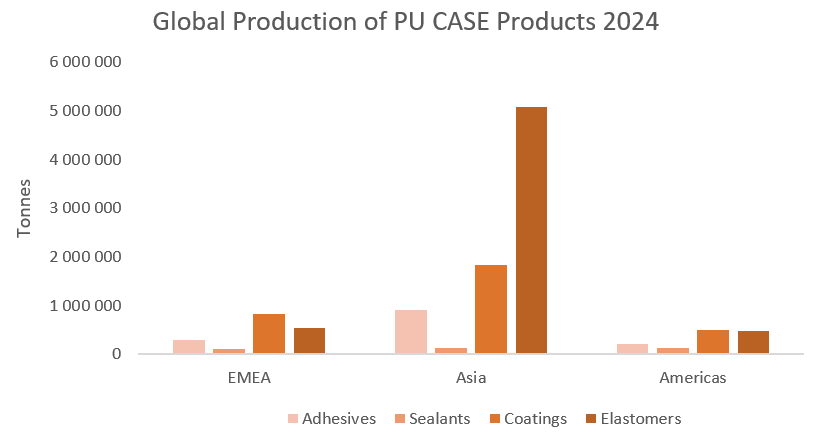Polyurethane Sustainability: Challenges and Scope of Eco-Friendly Production of Isocyanates
- ial
- Oct 13
- 2 min read
As the polyurethane market moves towards adopting more sustainable production methods, the manufacturers look to incorporate bio-based environment-friendly materials right from the raw materials themselves. However, among the raw materials segment, this incorporation seems to be much more feasible for polyols than isocyanates.
Challenges in Eco-Friendly Production of Isocyanates
Around the globe, the production of eco-friendly isocyanates faces notable technical and economic hurdles that continue to slow widespread commercial adoption.
Firstly, obtaining isocyanates directly from biomass is hampered by a paucity of comprehensive synthetic routes: many proposed transformations remain at lab scale and lack industrial viability. Established methods such as Curtius, Hoffman or Lossen rearrangements often entail hazardous or explosive intermediates (e.g. azides), require strictly anhydrous conditions, and are generally limited to aliphatic isocyanates—not the more reactive aromatic types.
Moreover, biomass-derived isocyanates typically display lower reactivity (because of their aliphatic structure), leading to slower curing or weaker mechanical performance in polyurethane formulations. Feedstock variability further complicates matters: lignin, sugars or oils differ in functional group distribution and purity, making it difficult to ensure reproducibility and high quality in the resultant monomers. Solvent and reagent issues also arise: many reported syntheses use toxic or volatile solvents (e.g. THF) or expensive reagents (e.g. AgNCO), which undermine the green credentials of the route itself. Yields in many reported biomass-derived isocyanate syntheses are modest, making upscaling economically challenging. Additionally, phosgene-free or low-phosgene routes, while desirable from a safety perspective, require highly optimised catalysts, reaction conditions, and precise control to prevent side reactions or decomposition. Finally, toxicity and occupational health issues remain prominent: conventional isocyanate chemistry (particularly phosgene use) demands stringent safety systems and regulatory compliance, and substituting biomass feedstocks does not inherently eliminate such hazards.
Scope of Eco-Friendly Production of Isocyanates

Despite these obstacles, industry leaders are making rapid progress in eco-friendly isocyanate production. Mass balance approaches, explored extensively by companies such as BASF, Huntsman, Evonik and Covestro, enable partial substitution of fossil-based feedstocks with renewable ones without altering existing infrastructure. BASF’s Lupranat ZERO MDI represents a landmark achievement as the first greenhouse gas neutral aromatic isocyanate, with similar efforts underway at Huntsman, Evonik’s Mobile site and Covestro’s global facilities. Meanwhile, innovations such as sugar- and lignin-based isocyanates, plant oil-derived precursors, and NIPUs are advancing through early-stage commercialisation.
Non-phosgene synthesis routes using carbonylating agents such as CO₂ or urea, while safer and more sustainable, demand precise process control and costly catalysts. Non-isocyanate polyurethane (NIPU) technologies, although promising, still lag in performance parity with traditional polyurethanes, restricting their use to niche applications. These factors, coupled with entrenched infrastructure for conventional petrochemical production, present significant barriers to large-scale transition.
Currently, eco-friendly isocyanates represent a marginal share of total production of isocyanates but are projected to grow at a compound annual growth rate of 34% by 2034. This growth will be driven by regulatory measures such as the European Chemicals Agency REACH restrictions on diisocyanates, technological advancements, and the drive towards circular and low-carbon chemical value chains. Over time, alternative pathways are expected to erode the dominance of mass balance methods, paving the way for a more sustainable polyurethane industry.
IAL




Comments